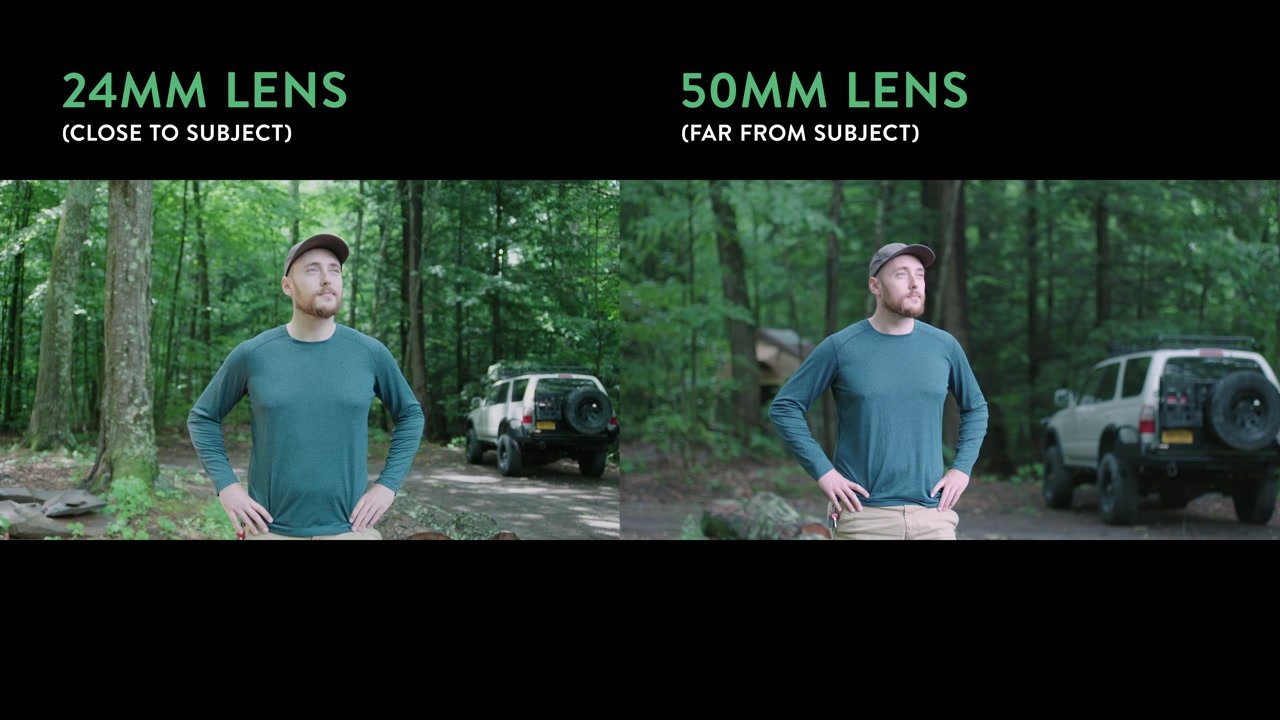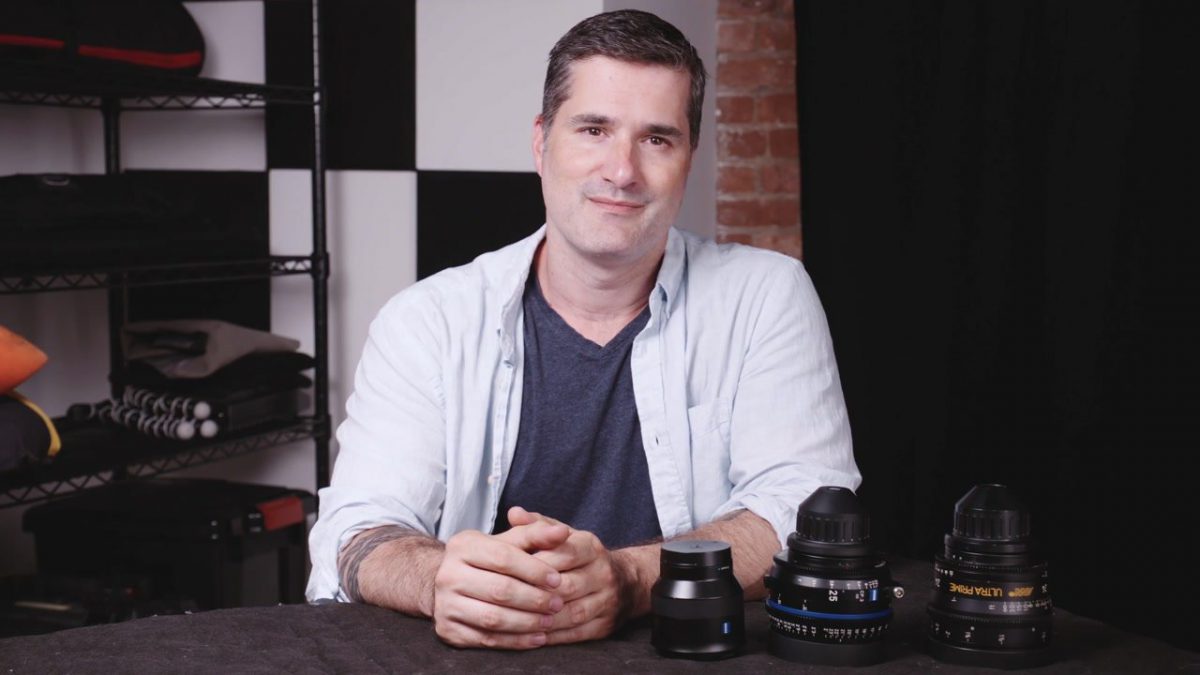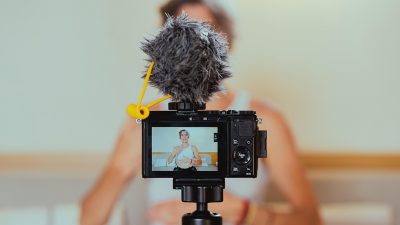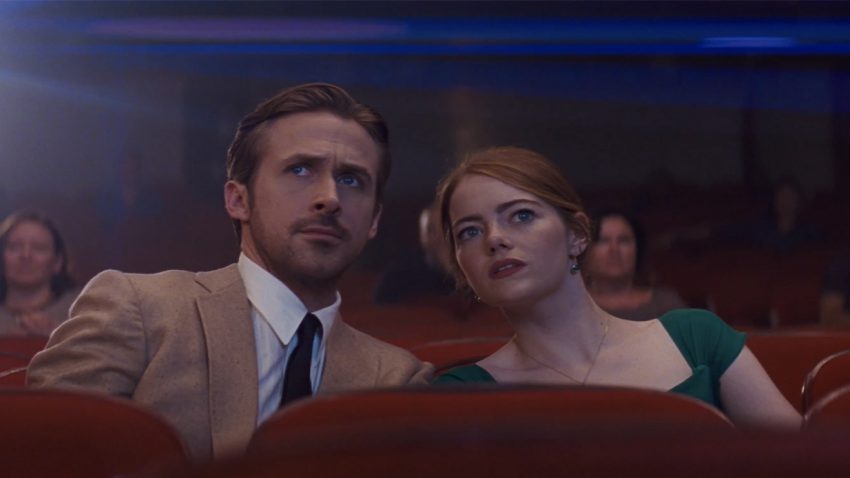In this episode of our How To Video: Camera series, we’re looking at lenses. The lens you select for your shoot can have a big impact on the resulting footage, as well as the process of filming itself.
To help make sure you know which lens to grab for your next shoot, we’re comparing focal lengths, and the differences between prime and zoom lenses. Watch the video below and keep reading for an overview of how to choose the right lens for your project.
Which Lens is Right For You?
There are so many different types of lenses out there, it’s hard to know where to start when it comes to choosing one for your project.
In this video overview, Nick LaClair, head of video production for SproutVideo, breaks down the impact focal length has on your shot, as well as the key differences between prime and zoom lenses.
So, what exactly do we mean by focal length? Want more details about prime and zoom lenses? Keep reading for a deeper dive into choosing a lens for your project.
Focal Length
The focal length of a lens is not a measurement of the lens, or your distance from the object being filmed. Rather, focal length determines the angle of view (how much a scene will be captured) as well as the magnification of individual elements in view.
A longer focal length provides a narrower angle of view, and increased magnification. Conversely, a shorter focal length results in a wider angle of view, and decreased magnification. A wide-angle lens, also referred to as a wide lens, will have a short focal length.
Choosing a Focal Length
The first step to selecting the right focal length for your project is to consider what you’re trying to capture on camera.
Sometimes, there are artistic reasons to go with one lens over another. Simply changing the position of the camera relative to your subject allows you to achieve a similar composition with different types of lenses, but results in very distinct looks.
In our video, we created two similar shots using a 24 mm lens and a 50 mm lens by changing the distance of the camera from our subject. Here are the images side-by-side:

As you can see, the shorter focal length on the left captures a wider view of the scene. The car in the background appears smaller in the distance, since it’s not as magnified by the lens.
In comparison, the long lens on the right still fits the same elements in the frame, but had to be placed further from our subject to do so. Additionally, the car appears larger in the background, but since it’s more out of focus, you still have the impression it’s far away.
In this case, the right option really depends on the look you’re going for. However, there are some additional factors worth taking into consideration.
Studio, or Action?
In a studio, or a similar environment where your subject will be relatively stationary at a fixed distance from the camera, a wide angle lens will mean you need a much larger backdrop because more of the subject’s surroundings will be in view.
Typically, you’d reach for a long lens in this scenario because your subject will fill more of the frame, while still keeping some of the backdrop in the shot.
On the other hand, if you’re filming a scene with a lot of action, it can be tough to keep your subject in the frame unless you use a wide angle lens to cover the shot. Going with a wide angle lens will enable you to minimize your movements while capturing the action.
By planning out your shoot ahead of time, and visualizing what you’re hoping to capture, you can be sure to pick the right focal length for your project. Storyboarding is an excellent way to keep your shots and lens choices organized on a more complex shoot.
Prime VS Zoom Lenses
Now that you know which focal length will work best for your project, you’ll need to narrow your choice even further between prime and zoom lenses. These two broad categories of lenses offer distinct advantages and disadvantages, which we break down for you below.
Prime Lenses
A prime lens has a fixed focal length, meaning it can only focus on a subject at a specific distance from the camera. If your subject is outside of that range, you’ll have to move the camera, or the subject, or both.
Pros
First, primes are typically faster lenses, meaning you can open the aperture wider, let in more light, and end up with a shallower depth of field. Those traits make a prime lens ideal in cases where you’re shooting in low light, or if you want an out-of-focus area for your shot’s aesthetic.

To help emphasize the difference in the depth of field, take a closer look at the plant in the background. It’s significantly more blurry when viewed through the prime lens. That kind of out-of-focus background can lend a professional quality to your project. Here’s a side-by-side look at that plant:

Prime lenses also have less distortion at wider focal lengths. Below, we compare a 25 mm prime and 25 mm zoom lens on the same composition. Notice how the vertical lines of the room appear to bend more with the zoom than they do with the prime:

Cons
While a prime lens is probably sounding pretty good after all that, you have to weigh some important considerations.
Working with a prime lens means you have to reposition the camera if your distance from the subject changes. Filming more than one subject at a time might not even be possible with a prime lens, depending on the situation. You can’t adjust on the fly like you can with a zoom.
Building on that, filming with prime lenses often means you need to use more than one lens. Having lenses with different fixed focal lengths allows you to get different compositions for your shots, but it also means you need more costly equipment on hand.
Additionally, changing lenses frequently increases complexity and the time required for filming. You might not always have the luxury or desire to do that.
Zoom Lenses
A zoom lens has a variable focal length. It can adjust from one subject to another at a range of distances from the camera without repositioning the camera.
Pros
The key advantage to a zoom lens is their flexibility. You can easily recompose a shot without missing too much of the action, as demonstrated from 2:00 – 2:25. This makes them ideal for capturing live events or documentaries.
Their versatility also means that working with a zoom lens can greatly reduce the amount of equipment you need on hand. If you can’t bring a lot of gear with you, a zoom lens might be the best choice since it’s adaptable to many situations. Since you won’t need to change lenses frequently, you can also save a lot of time and effort working with a zoom lens.
You’re also more likely to be able to stay in one place, even if your subject is moving. A zoom lens can stay focused on a subject as its distance from the camera changes.
Finally, they also allow you to be more creative with some of your shots. When you zoom in on a specific element of your frame, you can achieve an artistic effect that isn’t possible with a prime lens.
Cons
A zoom lens is certainly an excellent choice in a lot of situations thanks to their flexibility. However, in certain instances, the slower aperture, shallower depth of field, and greater distortion (detailed above) could make a difference to your project. It all comes down to the look you’re going for and what you’re trying to film.
What’s your go-to lens? Share with us in the comments below!








